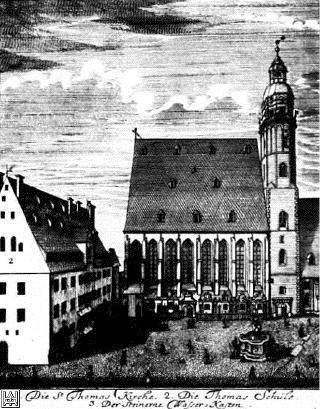J.S. Bach Mass in B Minor
Composition
Xinh's project for Mu123, spring/1996
[Bach home page]
In this page, I will describe when Bach composed the B-Minor Mass and how the composition took place over a period of 15 years.

Missa
In 1733, Bach was music director in Leipzig. In that year, Elector Friedrich August I of Saxony, which is a region of Germany that included Leipzig, died. The new elector, Friedrich August II was to take his place in Dresden. Taking this opportunity to obtain the favor of the new court and hoping to be granted the title of court composer, Bach presented the new elector, who was a Roman Catholic, with a new composition, a setting of the Missa, containing a Kyrie and Gloria, to music. This Missa was performed in 1733 in Dresden; however, it is doubtful whether it was ever performed in Leipzig at that time. In 1736, Bach was finally granted the title of "Hofkoponist" at the Dresden court. Bach would later use this Missa as the first major section of his B-minor Mass.
St. Thomas Church Yard in Leipzig
engraving by Johann Gottfried Krugner the Elder, 1723
Symbolum Nicenum
During the period between 1737-1742, Bach was preoccupied with studying Latin polyphonic liturgical compositions, especially the "stile antico" tradition of strict counterpoint. This extensive study may have been a sign of his plans for completion of the B-minor Mass. In the late 1730's, Bach composed two "short" masses, the one in A, and one in G (BWV 234, 236).
Sometime between 1742-45, Bach composed the second major section of his B-Minor mass, the Symbolum Nicenum, which contains the Credo.
Last section
The entire mass was written out around 1748, when Bach added a Sanctus movement, which he had composed earlier as a separate work in 1724. Bach also add the closing movements containing the Osanna onwards, all of which were parodies, or reworkings, of his earlier works, mostly movements from his church cantatas. In fact, out of the 2300 bars of the mass, 638 bars were borrowed from his earlier works.
Parodies of Cantata Movements
In this section, I list the movements that are parodies and the cantatas from they were taken. In most cases, Bach used the major choral movement, which was in German, from each cantata listed below, and set the music to the mass text. It seems amazing that a piece which sounded perfectly good in German, would translate so smoothly into Latin. However, note that most of these cantatas were church cantatas, and, therefore, their original text shared a common religious theme with the mass text.
Movement and Cantata:
[Back | Bach home page | Next]
Last updated: May 16, 1996
xinh@cco.caltech.edu
